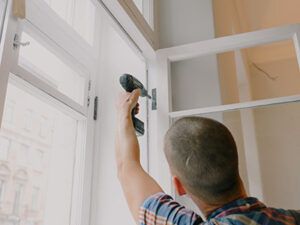
PMI Property Management offers full-service, local property management. The company offers professional services like property management and tenant relations. PMI boasts a reputation for being one of the best property management companies in America, managing more than 15 million assets.
Private Mortgage Insurance is a type insurance that protects lenders in the event of default on the loan. The monthly payment varies based on the type of loan. It will generally cost between 0.1% and 2% of your total loan amount. Consider a loan with lower interest rates or an alternative that's less costly than conventional mortgages with PMI if you don't have the funds.
Paying PMI is not something you want to do. Instead, pay a minimum 20% down payment. This amount is calculated based on the current market value of the home. When you make a down payment, you automatically build equity. You will also increase your equity as the home price rises. You can then request the cancellation of your PMI policy if you have at least 20 percent equity.

The Internal Revenue Service lets you deduct your PMI payments from your taxes. There are limitations to this deduction. The IRS has not extended this deduction beyond 2022. If your annual PMI expenses are less than 10% of your adjusted gross income, you still qualify for a tax deduction.
It is possible to be financially risky by buying a house with a low down payment. The monthly payments can be higher than the home's market value, and you could end up owing more than the home is worth. Lenders require private mortgage insurance policies. It protects the lender in the case of default.
Piggybacking is an alternative to PMI. Piggybacking is where your loan is split into an 80/10/10 arrangement. A first loan will cover 80% of the home's value while the second will cover 10%.
An alternative to PMI is a single premium policy. Single-premium policy are payable in full at closing. If you have the remaining balance of the loan, you may be able to combine the insurance cost into one payment.

The general rule is that the lower the down payment on a home, you pay more interest. Luckily, there are several down payment assistance programs available to help you get a low interest rate on a home loan. These include grants, state and federal programs, and lender-offered loans. Ask your bank or lender if they can help you determine if this program is right for you.
It's a great way for you to build equity by purchasing a home with a large down payment. But, you should keep in mind that you might not have enough to cover your downpayment if you decide to refinance after a few more years. Also, if the value of your home falls, you might find it harder to refinance.
FAQ
Does a handyman make suggestions about how to improve my home?
Absolutely! In fact, a handyman is trained in all areas of home repair and maintenance. He or she knows what needs to be fixed and what doesn't. You don't have to be shy about asking for advice when you need it.
Do professional handyman services really make sense?
This will depend on the type and scope of your project. A professional handyman service is recommended for complex projects such as office renovations.
What happens if a handyman causes me damage or doesn't do his job as I would like?
Notify him immediately if something goes wrong with the project. It is best to take photos and write down the details. Next, contact your insurance company and file for a claim.
Are handymen insured?
Yes! Yes. Most insurance companies cover liability claims over $1 million for accident property damage or bodily harm. This means that you will be compensated by your insurance company if anything goes wrong during the project.
What is the average time it takes to complete a DIY project?
An average DIY project takes between two and four hours. The complexity and difficulty levels of the project determine the length.
What are the most frequent handyman repairs that you need to make?
Handymen are often called upon to repair roofs and windows, doors, gutters or siding. They also can install hot water heaters, air conditioning units, electrical systems, sheds, decks, fences, sheds and other items. When it comes to building or home improvement projects that cannot be performed by DIY homeowners, handymen can help with carpentry, plumbing, painting, drywall installation, landscaping, concrete work, fence construction, decking, tiling, and more.
What license do I need to become a handyman in order to get my permit?
Most states don't require a license in order to be an independent contractor, as opposed to a salaried employee. However, there are some requirements you must fulfill:
-
Be at least 18 years old.
-
Have a high school diploma or GED.
-
Take a four-week course at vocational school.
-
A background check is required by the Department of Licensing.
-
To register for an annual subscription, pay $20
You will also need a workers' comp insurance and a business license.
Statistics
- According to the U.S. Bureau of Labor Statistics, in May 2020, there are 1,357,630 handymen employed in the U.S.. (angi.com)
- With a strong housing market, the handyman and general maintenance worker industry are expected to grow by nearly 10% in the next decade. (housecallpro.com)
- “Once the pandemic hit, that number fell to about 20%.” (inquirer.com)
- Another estimate was that the market in the United States was $126 billion and was increasing by about 4% annually. (en.wikipedia.org)
- Mila keeps a commission of 20% for each completed service performed by Friends and charges various service fees regarding work done by Pros. (appjobs.com)
External Links
How To
How to replace a broken window
Replacing broken windows is one of the most common home improvement tasks. This involves fixing any damage caused by the glass. In this case, the repair work should only take around 30 minutes. If you don't know how to replace broken glass, you could cause more damage to your home. This article will give you some helpful tips for replacing broken windows.
First step: Remove the old glass from its frame
First, take out all the screws that are holding the glass in place. Next, remove the lock at the top of the lower section of your window frame. Next, lift the window upwards so it isn’t attached to sill plates (the metal bars below the floor). The last step is to gently loosen all remaining screws with a tool. Once the panes are removed, clean them thoroughly.
Next step: Clean the glass
You can wipe any dirt off the glass surface with a towel or a dry cloth. If debris is stuck under the glass, try cleaning it with a spray bottle filled with water and rubbing alcohol.
Third Step: Reinstall new glass
Reattach the window panels to the frames. Use a screwdriver to push the outermost edge of your pane down. Gently push the pane back into the opening in the frame. Move on to the next piece of pane. Push it into the opening in the frame. Continue inserting the panes until the entire window is assembled. To seal the area where the panes meet, use a silicone caulk gun.
Fourth step: Repair any damage.
Before installing the new glass, make sure to inspect the area around any cracks. If the break occurred near the corner of the window, install two small pieces of wood along each side of the hole. These wooden blocks will add strength to the window while also acting as spacers to keep the glass in place during the expansion and contraction of the weatherproofing material.
The fifth step is to seal the area.
After the glass has had to be replaced, apply silicone caulking at the perimeter edges. This will create a good seal between the glass and the surrounding wallboard. Silicone caulking is available at hardware stores as well as online. Be sure to choose a color that matches the existing paint on the walls.
Allow the caulking to cure overnight. Once the caulking is fully set, don't disturb it. You could crack the caulking if you wait too long.